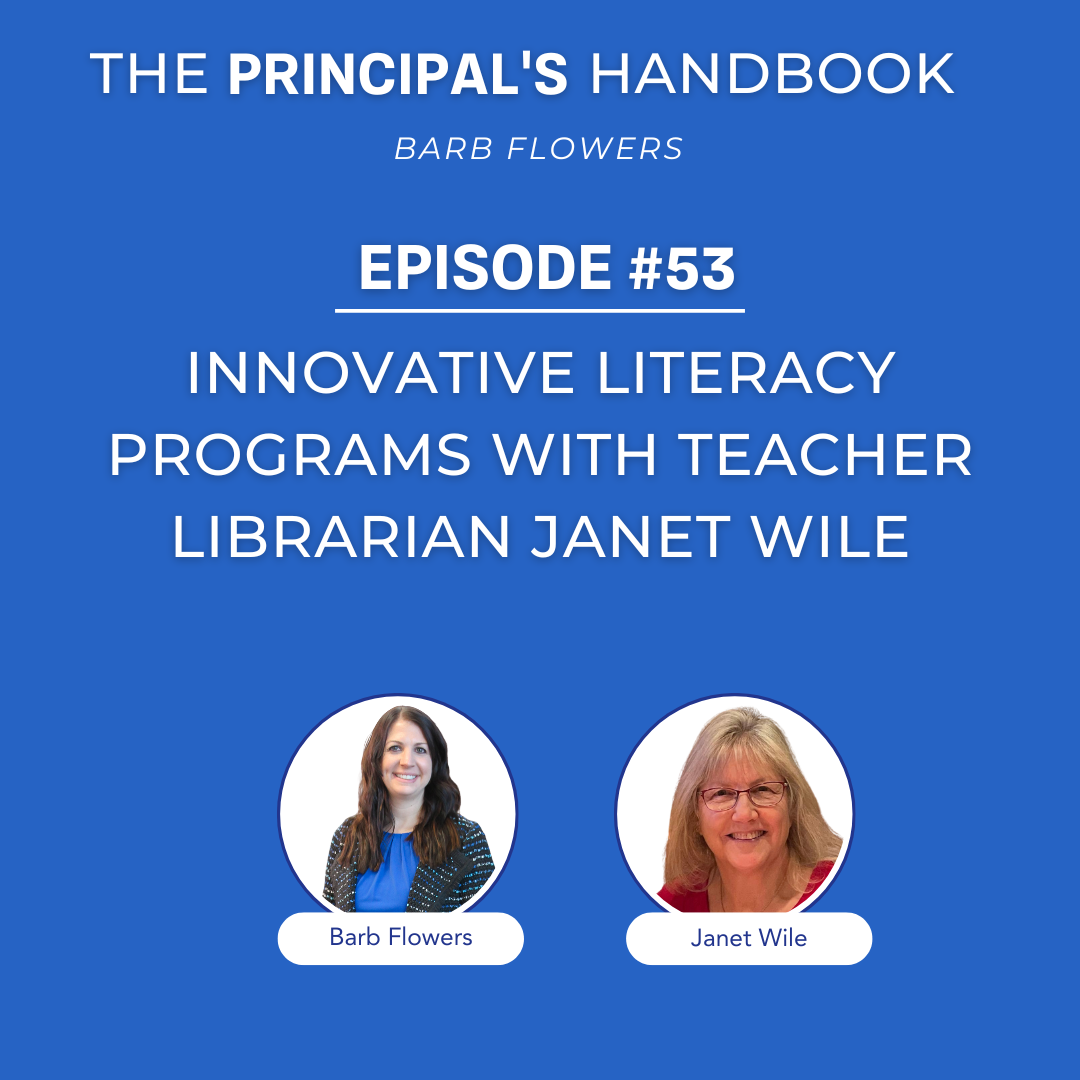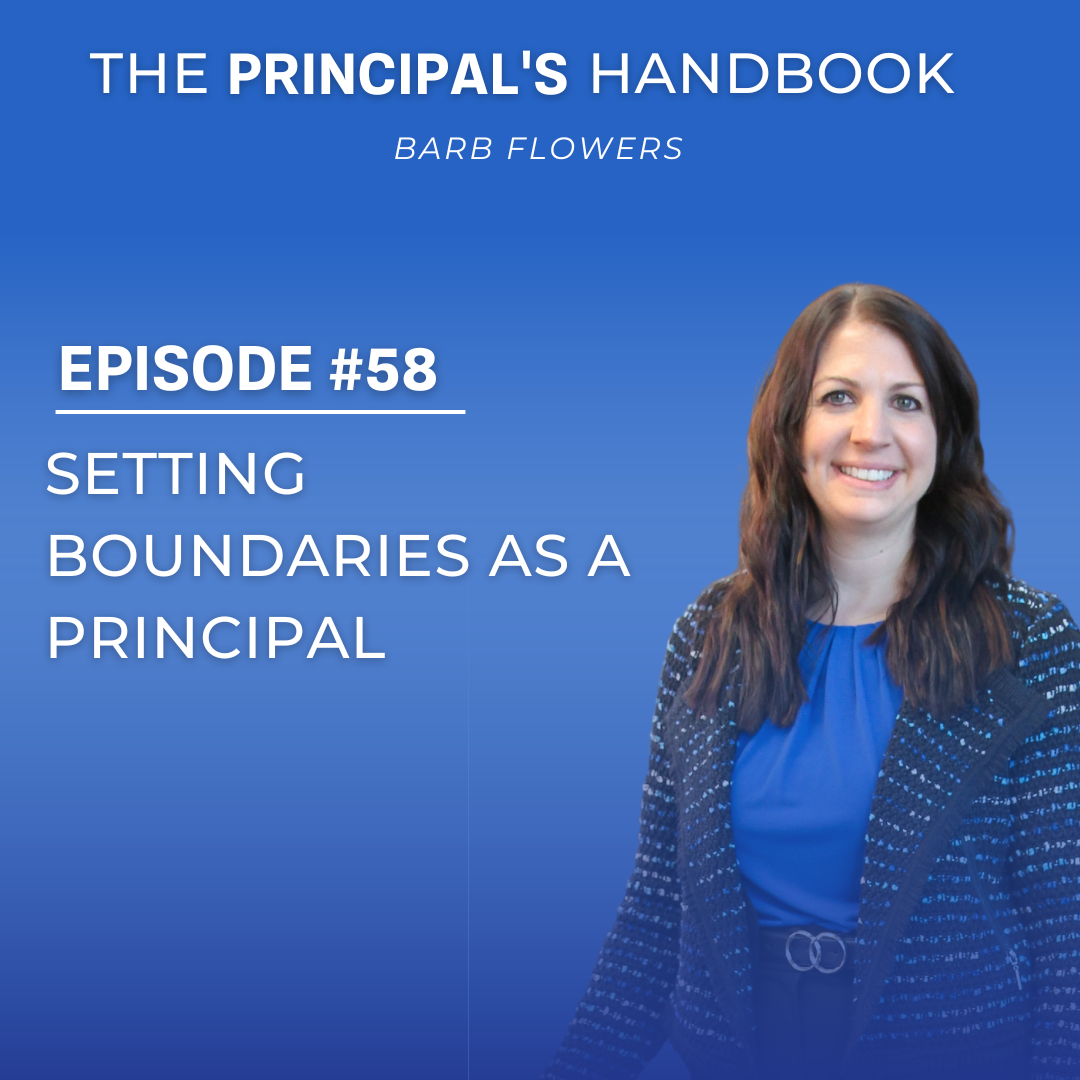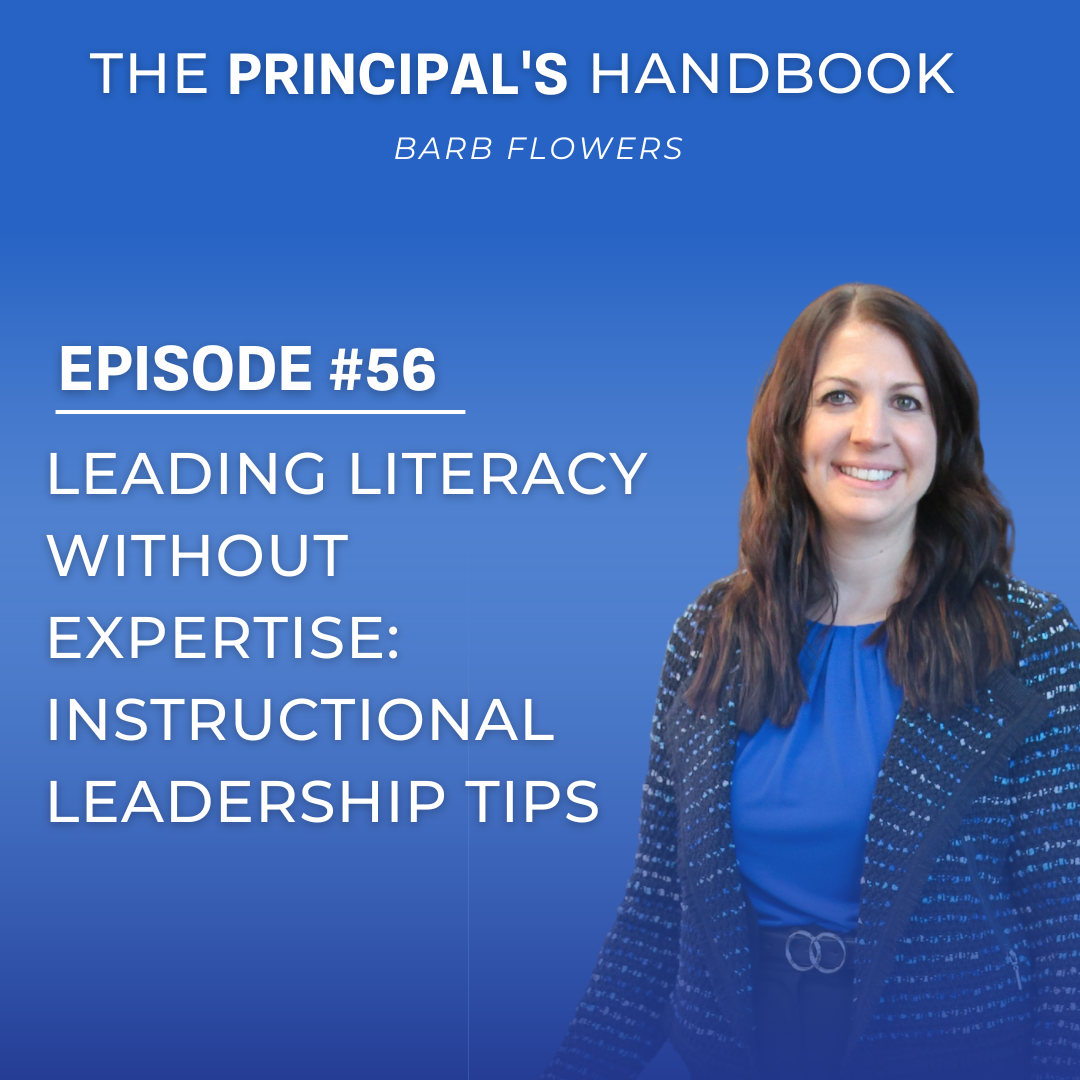This episode is part of the National Literacy Month with RAF campaign, a partnership between the Bee Podcast Network and Reading is Fundamental to host numerous productive conversations across our network of podcasts about developing kids’ reading and literacy skills for life.
Welcome to The Principal’s Handbook, your go-to resource for principals looking to revamp their leadership approach and prioritize self-care. I’m Barb Flowers, a certified life coach with eight years of experience as an elementary principal. Tune in each week as we delve into strategies for boosting mental resilience, managing time effectively, and nurturing overall wellness.
From tackling daily challenges to maintaining a healthy work-life balance, I’m Barb Flowers. We’ll navigate the complexities of school leadership together. Join me in fostering your sense of purpose as a principal and reigniting your passion for the job. Welcome to a podcast where your well-being is the top priority.
Welcome back to the podcast! I’m excited to be here today with Janet Weill, who is going to talk to us about her experiences as a school librarian. Janet, please go ahead and tell us a little bit about yourself and your experiences in education, as well as what you’re currently doing.
Janet Weill:
Thank you so much, Barb. I’m really happy to be here and hope I can help shed some light on the mysteries behind school libraries and all the things we do. I started as a social science teacher in high school, and at one point in my career, I had the opportunity to consider getting a second teaching credential in school libraries, which led to becoming a teacher librarian. In California, we purposefully put the word “teacher” first because we view school libraries as the biggest classroom on campus.
I had the privilege of holding that position for 14 years at Central High School East Campus in Fresno, California, located in the heart of the San Joaquin Valley. This area is known for its agricultural production, and many of our students come from farming families. Over the years, we’ve seen a large influx of immigrant families from Southeast Asia, India, and, of course, Mexico, making the valley a true melting pot.
As a teacher librarian, I had the joy of building a love of reading and fostering a culture of literacy in the school. We also worked collaboratively with all subject teachers, for example, when a history teacher would come to me to discuss a World War II unit. We’d work together on teaching students how to research, how to distinguish between legitimate and biased sources, and how to integrate books with internet research.
One of our main goals was to build a library that felt welcoming and inclusive for all students, so we offered a variety of activities like maker spaces, poetry contests, reading clubs, and book clubs. The library became the hub of the school, and I got to be part of the instructional team, which was wonderful.
In 2014, I moved into my current role as supervisor of library services for the district, where I oversee 22 school libraries. I also manage the textbook program, ensuring we meet California’s Williams compliance law, which requires us to prove our students have appropriate resources, fully qualified teachers, and good facilities. It’s busy, but I love it, and we’re gearing up for another school year.
Barb:
Wow, that sounds like such a cool position! I love how you describe the teacher librarian role and how much teaching is still involved. It’s great that you collaborate so much with other teachers for cross-curricular instruction. I know that looks different in different districts, so I think it’s wonderful that you’re able to integrate that with your school’s culture.
Janet Weill:
We’re fortunate in our district to have a teacher librarian at each secondary school. While we don’t yet have them in elementary schools, I’m working on that. At the secondary level, we pair the teacher librarian with a library media technician, which frees the teacher librarian to focus on lesson planning and instructional leadership rather than tasks like checking in and out books.
A big part of our work is encouraging kids to read, especially once they get to middle school and high school, when reading tends to drop off. We have programs like Battle of the Books, a local and county competition, which has been a huge success. We’ve won the county competition the last few years, and it’s great to see how students engage in reading through these kinds of events.
We also participate in the California Young Reader Medal (CYRM) program, where students vote on their favorite books. I’ve found that teaming up with teachers in various subjects is a great way to integrate these books into their curricula. For example, they can read a CYRM book and do a book report or create a book trailer to earn class credit. Teachers are always willing to support reading if we find the right way to tie it to their curriculum.
Barb:
That’s fantastic! I really love all of these creative ways you engage students in reading, especially in the middle and high school years. You’ve also been involved in a couple of amazing programs like “Athletes as Readers and Leaders” and “Slamming in Your Library.” Can you tell us a bit about those?
Janet Weill:
I’m so proud of both programs. “Slamming in Your Library” started when the American Library Association introduced Teen Read Week, which is now called TeenTober. The theme one year was “Slamming in Your Library,” so we adapted it into a poetry contest. At first, we were cautious with the slamming format, as it’s typically free-form and may include language that’s not appropriate for a school setting, so we focused on encouraging students to write and perform their own original poetry.
It started small, with just 10 or 12 students, but over the years it grew into a beloved tradition. Now, the poetry slam is part of the culture at our high school, and we’ve even expanded to other schools in the district. We’ve added awards for excellence in writing and presentation, and the finals are held in our Performing Arts Center, where students compete in front of their peers. It’s become such a great outlet for students to share their voices.
“Athletes as Readers and Leaders” began when I read a Stanford study about the growing concern with youth inactivity and lethargy. A colleague of mine suggested having football players read to elementary students, and we began with a few players visiting a nearby school. The response was so positive that it quickly grew into a program involving athletes from various sports.
The athletes are trained by the teacher librarian on how to engage students while reading, not just reading at them but interacting with them. Over the years, the program has expanded to include cheerleaders, pep squads, and other student groups. Now, we reach about 5,000 kids each year, and the impact on both the elementary students and the high school athletes has been incredible.
Barb:
These programs are amazing! It’s so great to see the high school athletes not only encouraging reading but also building leadership skills. I can tell that you’re really making a big impact. You also mentioned the Reading is Fundamental program. Can you tell us more about how you use that in your district?
Janet Weill:
Reading is Fundamental (RIF) is a fantastic program that helps get books into the hands of kids. Our district is a “book desert,” meaning many families don’t have access to books at home. Many of our families struggle with transportation, and some can’t afford to buy books. The RIF program helps us address that gap by providing free books to students.
The first time we partnered with RIF, we saw the joy on students’ faces when they picked out a book to take home and keep. It was incredibly powerful. In some of our schools, students get to choose one or two books, and the look of pride and ownership is just priceless.
Our school libraries are well-stocked with books to read, but RIF gives students the chance to own books, which makes a huge difference in their engagement with reading. We’ve partnered with them for years, and it’s been a game-changer for our students.
Barb:
It sounds like such a valuable program. How do schools partner with Reading is Fundamental?
Janet Weill:
You can contact them directly by email. They’re always looking for schools to partner with. We’ve been fortunate to work with them for over 11 years. They offer different programs, and the one we’ve used is focused on providing students with books they can take home. It’s been an incredible resource for our district.
Barb:
I love everything you’ve shared today! If a principal is interested in creating a culture of literacy at their school, what advice would you give them as a first step?
Janet Weill:
The first step is deciding that you want to prioritize literacy. At our high school, we started with 10 minutes of silent reading every day, called SSR (Silent Sustained Reading). We made it fun by catching students reading and creating posters of them with the books they were reading. This helped create a reading culture.
You can also look into programs like the California Young Reader Medal or other state library initiatives. Getting teachers on board is key—they’re willing to support reading, especially when we show them how it can tie into their curriculum.
And remember, you don’t have to do everything at once. Start small, but keep the vision clear: reading should be fun, accessible, and part of the school culture.
Barb:
Thank you so much for all of these great ideas, Janet. I hope this inspires principals to collaborate with their librarians and make reading a central part of their school culture. It’s been a pleasure having you on the podcast.
Janet Weill:
It was a real pleasure, Barb. Thank you so much for having me.






